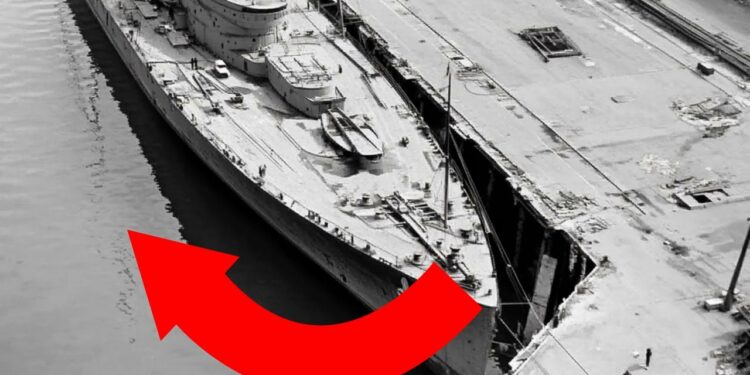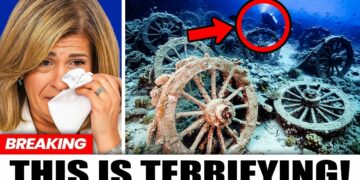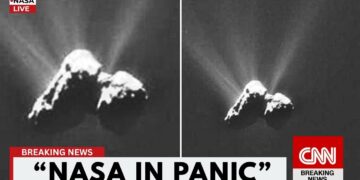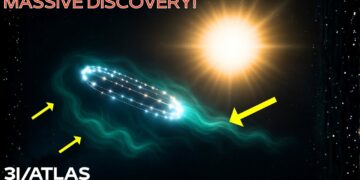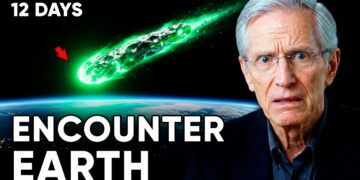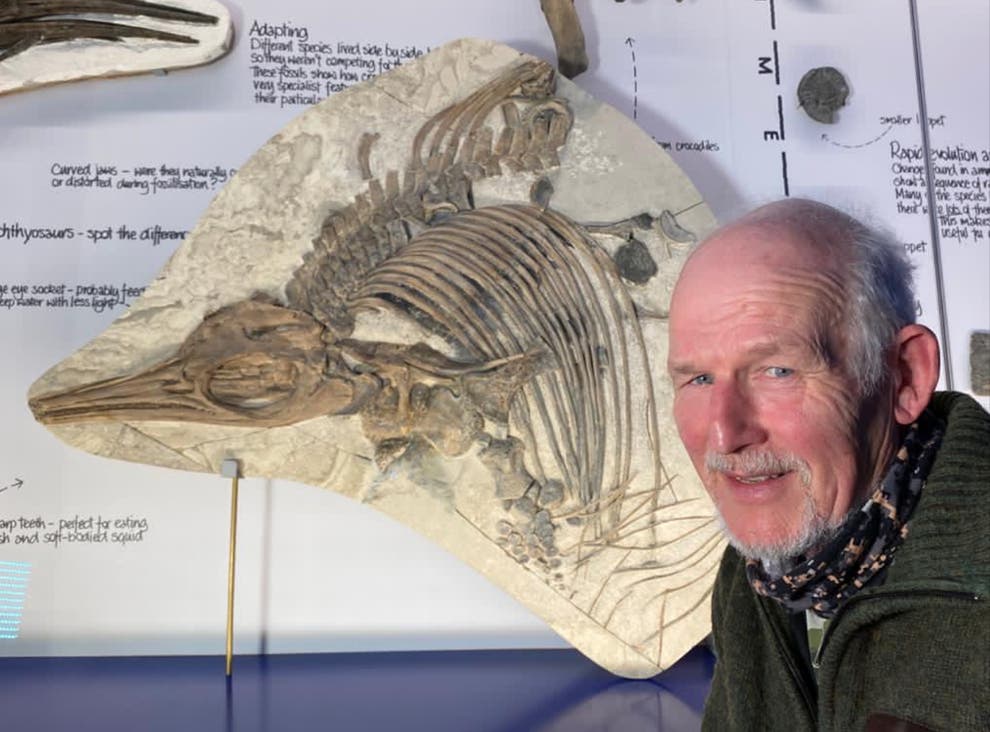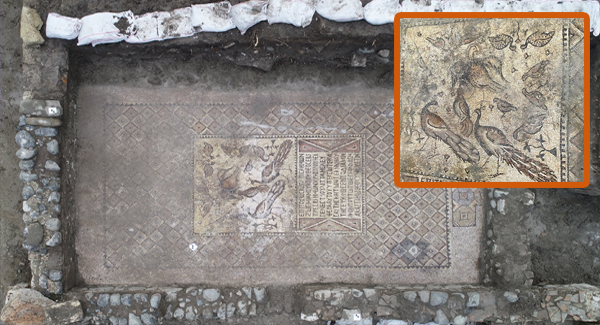As the first wave of 183 Japanese airplanes, led by Commander Mitsuo Fuchida, launched from north of Oahu to attack Pearl Harbor, a second wave of 171 planes, commanded by Lieutenant Commander Shigekazu Shimazaki, followed closely behind. The Japanese military showed no mercy, annihilating everything in sight—people and machines alike. Amid the chaos, a group of determined U.S. servicemen achieved an extraordinary feat at Pearl Harbor that would later alter the course of the war. What really happened at Pearl Harbor? How did the U.S. military turn the tide? Join us in this thrilling account as we uncover the impossible move that outsmarted Japan at Pearl Harbor.
The Drums of War
In the late 1930s, America was committed to supporting China as Japan’s aggression intensified, making a clash with the United States increasingly inevitable. In 1931, Japan seized control of Manchuria, a vital Chinese region, and by 1932, established the puppet state of Manchukuo. Tensions escalated, culminating in open warfare on July 7, 1937, with a fierce battle at the Marco Polo Bridge near Beijing between Japan and the united forces of Chinese Nationalists and Communists. The U.S. responded swiftly, providing China with its first loan in 1937 to resist Japanese aggression. By July 1939, the U.S. terminated a long-standing trade treaty with Japan, and in the summer of 1940, began restricting exports of critical war materials. From June 1940 to December 1941, tensions rose like a ticking time bomb.
By July 1941, Japan had occupied all of Indochina and allied with Germany and Italy. In response, the U.S. cut off all commercial and financial ties with Japan, froze their assets, and imposed an embargo on oil and other vital war supplies. In Tokyo, military leaders, enraged by U.S. support for China, saw Germany’s invasion of the Soviet Union as an opportunity to pursue aggressive plans in the Far East without fear of Soviet interference. Despite ongoing U.S.-Japan negotiations in the fall of 1941, by late November, it was clear no agreement could be reached. War loomed on the horizon.
Japan’s Prime Minister Hideki Tojo made a fateful decision to choose war despite ongoing talks to avoid conflict. Admiral Isoroku Yamamoto, the brilliant commander of Japan’s Combined Fleet, devised a daring plan to strike the U.S. Pacific Fleet, aiming to clear the path for Japan to dominate Southeast Asia and the Indonesian archipelago. On November 5, 1941, the order for the audacious attack was issued. By November 6, the Japanese fleet began assembling in the remote Kuril Islands, hidden from prying eyes. There was still hope that negotiations in Washington, D.C., might avert war, and commanders were told they could be recalled if an agreement was reached. However, as talks collapsed, Vice Admiral Chuichi Nagumo led a formidable fleet—including six aircraft carriers, two battleships, three cruisers, and 11 destroyers—setting course for Hawaii on November 26. From 275 miles north of Hawaii, approximately 360 planes were launched, setting the stage for the devastating attack on Pearl Harbor.
Underestimating the Enemy
Since April 1940, the U.S. Pacific Fleet had been stationed at Pearl Harbor, bustling with nearly 100 naval vessels, including eight battleships, alongside strong military and air forces. As tensions mounted, Admiral Husband E. Kimmel and Lieutenant General Walter C. Short, who shared command at Pearl Harbor, received multiple warnings about the looming threat of war. Alerts came on October 16, November 24, and November 27, 1941. The November 27 warning to Kimmel was particularly stark, stating, “This dispatch is to be considered a war warning,” noting that negotiations had ceased and ordering defensive deployment and reconnaissance. A similar message to Short warned that “hostile action is possible at any moment.” Despite these warnings, the actions taken by the Army and Navy commanders proved inadequate.
Fearing sabotage, Short ordered an alert, concentrating most fighter planes at Wheeler Field to prevent damage and operating five mobile radar sets from 4:00 AM to 7:00 AM, though radar training was still rudimentary. Kimmel, meanwhile, faced a troubling reality: his intelligence could not locate significant parts of the Japanese fleet, particularly the critical carrier divisions. Yet, he did not expand reconnaissance to the northwest, the most likely direction of attack. Instead, he kept the fleet in the harbor, except for ships already at sea, and allowed some personnel shore leave. Neither Kimmel nor Short suspected Pearl Harbor itself would be targeted, and even their superiors in Washington seemed unaware of the imminent danger. In the ten days between the war warning and the attack, no additional actions were taken, leaving the base vulnerable.
Early on Sunday, December 7, tension gripped Washington. News arrived that Japanese ambassadors were ordered to meet the Secretary of State at 7:30 AM Pearl Harbor time—a clear sign of impending war. The message was delayed in decoding, reaching the Chief of Naval Operations three hours later and the War Department between 9:00 AM and 10:00 AM. General George C. Marshall, the U.S. Army Chief of Staff, was horseback riding and did not see the dispatch until 11:15 AM. Admiral Harold Stark, Chief of Naval Operations, deemed no new orders necessary for Kimmel. Marshall, sensing danger, sent a telegram warning, but due to a communication mix-up, it arrived in Hawaii after the attack began.
Small incidents could have provided a brief warning. Four hours before the attack, the minesweeper USS Condor spotted a Japanese submarine. Two and a half hours later, the destroyer USS Ward’s commander reported attacking a submarine in a defensive sea area near Pearl Harbor. While Kimmel awaited confirmation, the Japanese struck. During those tense morning hours, U.S. Army Private George Elliott, practicing on a radar set after its normal closing time, noticed a large group of planes but was told to ignore them, as B-17 bombers from the U.S. were expected. Another critical opportunity was missed.
Hell from Asia
At 7:55 AM on December 7, 1941, the first Japanese dive bomber appeared over Pearl Harbor, shattering the Sunday morning calm. Nearly 200 aircraft—torpedo planes, bombers, and fighters—followed in the first wave. Within minutes, airfields were under brutal assault. The first group targeted battleships and aircraft carriers with 49 Nakajima B5N “Kate” bombers armed with armor-piercing bombs and 40 with torpedoes. The second group, with 51 Aichi D3A “Val” dive bombers, attacked Ford Island and Wheeler Field. The third group, 43 Mitsubishi A6M Zero fighters, ensured air control and strafed ground targets. Due to Short’s anti-sabotage measures, U.S. aircraft were tightly packed at Ford Island, Wheeler, and Hickam Fields, making them easy targets. At Wheeler Field, 42 of 126 planes were destroyed, 41 badly damaged, and only 43 remained serviceable. Just six U.S. planes took to the sky during the first wave, with over 180 American aircraft destroyed in minutes.
Meanwhile, a massive attack targeted Kimmel’s fleet. Anchored ships were sitting ducks, undermanned on a Sunday morning. Within 30 minutes, most battleships suffered crippling damage. The USS Arizona exploded in a tremendous blast, sending flames and debris skyward. The USS West Virginia, struck by bombs and torpedoes, sank to the harbor bottom. The USS Oklahoma, hit by four torpedoes in five minutes, rolled over, exposing its bottom and propeller. The USS California, flagship of the Pacific Battle Force, was torpedoed and sank slowly after being abandoned. The target ship USS Utah was sunk, and nearly every vessel in the harbor was damaged. Of the 49 armor-piercing bombs dropped, only about eight hit battleship targets; some broke apart, exploded prematurely, or were duds. Thirteen of 40 torpedoes struck battleships, with four hitting other ships.
The surprise was total. Servicemen, jolted awake by alarms, bombs, and gunfire, scrambled to their stations. The famous message, “Air raid Pearl Harbor, this is not a drill,” was sent from Patrol Wing 2 headquarters. Ammunition was locked away, aircraft parked wingtip-to-wingtip, and guns unmanned. Despite the chaos, many responded with bravery. Ensign Joseph Taussig Jr. aboard the USS Nevada commanded anti-aircraft guns, remaining at his post despite severe wounds. Lieutenant Commander F.J. Thomas got the USS Nevada underway until it was grounded to avoid sinking. The destroyer USS Aylwin set off to sea with only four inexperienced officers, staying at sea for 36 hours. Captain Mervyn Bennion led the USS West Virginia until fatally injured by bomb fragments. Though anti-aircraft crews and Army personnel fired back, the Japanese attack’s sheer force was overwhelming.
At 8:50 AM, the second wave of 171 planes, led by Shimazaki, began. Four planes failed due to technical issues, but the remaining were divided into three groups: 54 B5N bombers targeted aircraft and hangars at Kaneohe, Ford Island, and Barbers Point; 78 D3A dive bombers attacked carriers and cruisers; and 35 A6M fighters protected bombers and strafed ground aircraft. Approaching from multiple directions, they overwhelmed defenses. The USS Nevada, already hit, was bombarded with seven or eight more bombs and grounded. The USS Pennsylvania was engulfed in flames, and nearby destroyers were wrecked. The USS Shaw suffered a catastrophic explosion, splitting in two. By shortly after 9:00 AM, the Japanese planes withdrew, leaving devastation. They lost 29 to 60 planes, five submarines, and fewer than 100 men.
The human toll was staggering: 2,403 Americans died, and 1,178 were wounded, including 1,028 Navy personnel (710 wounded), 2,118 Army soldiers and airmen (364 wounded), 178 Marines (69 wounded), and 103 civilians (35 wounded). Eighteen ships were sunk or run aground, including five battleships. The USS Arizona’s explosion, triggered by a Japanese bomb hitting its forward magazine, accounted for nearly half the fatalities, mostly young sailors aged 17 or 18. Nine firefighters from the Hawaii Fire Department, responding at Hickam Field, were attacked by machine gun fire and bombs, with three—Harry Tuck Lee Pang, Captain Thomas Macy, and Captain John Carreira—killed and six wounded, the only U.S. fire department attacked by a foreign power.
The Hail Mary for Vengeance
Amid the chaos, the cruiser USS St. Louis, nicknamed “Lucky Lou,” became the first major ship to escape the burning harbor. Undergoing top-secret radar installation at the shipyard docks, its engines were cold, and a steel gangplank connected it to the USS Honolulu. When the attack began, Captain George A. Rood ordered the ship to fight back with anti-aircraft guns and get underway. The crew shot down the first Japanese aircraft, igniting hope. They cut the gangplank with a torch, and at 9:31 AM, Lieutenant Charles Akers guided the St. Louis through a harrowing escape, dodging obstacles and enemy fire. Passing between two minesweepers, the ship turned hard left past burning Battleship Row at 22 knots. A Japanese submarine fired two torpedoes, but both hit a coral shelf and exploded, sparing the ship. The St. Louis reached open sea, earning its nickname. Had a large ship sunk in the channel, it could have blocked the harbor for months.
Admiral Kimmel’s decisions also provided a glimmer of hope. Two U.S. aircraft carriers, the USS Enterprise and USS Lexington, were absent during the attack. The Enterprise, under Admiral William F. Halsey, was reinforcing Wake Island, while the Lexington was ferrying Marine dive bombers to Midway. These operations kept seven heavy cruisers and a destroyer division at sea. The Enterprise, delayed by bad weather, avoided the attack, and the USS Saratoga was safely in San Diego.
As the smoke settled, Japanese commanders debated a third strike. Junior officers, including Fuchida and Genda, urged Vice Admiral Nagumo to target remaining warships, maintenance shops, dry docks, and oil tank yards. However, American anti-aircraft fire had become more accurate, and Nagumo feared heavy losses. The unknown location of U.S. carriers, dwindling fuel reserves, and the risk of night landings led Nagumo to withdraw, believing the mission had neutralized the Pacific Fleet. Historians suggest a third strike targeting shore facilities could have delayed U.S. operations by over a year, extending the war by two years. Yamamoto later regretted not ordering a third strike, calling it a grave mistake.
On December 8, Congress declared war on Japan, awakened by the attack. On December 21, President Franklin D. Roosevelt met with the Joint Chiefs, demanding a bold response to boost morale. He tasked Jimmy Doolittle, a renowned test pilot, with planning a raid on Japan to create confusion and doubt among its leaders and people. Navy Captain Francis S. Low proposed launching twin-engine Army bombers from an aircraft carrier, inspired by observing bombers practicing on a carrier-deck outline. Doolittle selected the B-25B Mitchell, modified for a 2,400-nautical-mile range with a 2,000-pound bomb load. Other aircraft, like the Martin B-26 Marauder, Douglas B-18 Bolo, and Douglas B-23 Dragon, were unsuitable due to takeoff or wingspan issues.
Initially, Doolittle planned for the bombers to land in Vladivostok, shortening the flight by 600 nautical miles and transferring the B-25s to the Soviets under Lend-Lease. However, the Soviet Union’s neutrality pact with Japan prevented this. Chiang Kai-shek agreed to provide landing sites in China, despite risks of Japanese reprisals. Five airfields in Zhejiang Province were chosen for refueling before continuing to Chongqing. The mission faced another challenge: no fighter escorts, leaving the bombers to rely on skill and surprise.
The D-Day
On April 1, 1942, 16 modified B-25 bombers, each with a five-man crew, were loaded onto the USS Hornet at Naval Air Station Alameda, California, along with 71 officers and 130 enlisted men. Each bomber carried four 500-pound bombs—three high-explosive and one incendiary bundle with Japanese friendship medals wired on as a symbol of retaliation. Armament was reduced to two .50-caliber machine guns in an upper turret and a .30-caliber in the nose to extend range. The bombers were tightly clustered on Hornet’s flight deck.
On April 2, the Hornet and Task Force 18 departed San Francisco Bay, joined by Task Force 16, led by Vice Admiral Halsey, including the USS Enterprise, three heavy cruisers, one light cruiser, eight destroyers, and two fleet oilers. Radio silence was maintained to avoid detection. On April 17, oilers refueled the task force before withdrawing, while the carriers and cruisers pressed westward at 20 knots into enemy waters.
On April 18, 650 nautical miles from Japan, a Japanese picket boat, Nitto Maru, spotted the task force and sent an attack warning. The USS Nashville sank the boat, but the mission was compromised. Doolittle and Captain Marc Mitscher decided to launch immediately, 170 nautical miles farther and 10 hours earlier than planned. With only 467 feet of runway, all 16 bombers launched successfully, though Doolittle’s nearly skimmed the ocean. Flying low to avoid detection, they reached Japan by noon Tokyo time, climbing to 1,500 feet to bomb military and industrial targets in Tokyo, Yokohama, Yokosuka, Nagoya, Kobe, and Osaka. Some faced light anti-aircraft fire and enemy fighters, but no bombers were shot down. Minor damage was reported, and one bomber jettisoned its bombs early. American gunners claimed three Japanese fighters downed.
Fifteen bombers headed southwest across the East China Sea toward China, but one, piloted by Captain Edward J. York, low on fuel, flew to the Soviet Union. Chinese airfields were to guide the bombers with homing beacons, but Admiral Halsey’s signal to alert the bases was never sent, leaving the crews flying blind. Worsening weather and low fuel made reaching the airfields nearly impossible. A tailwind boosted ground speed by 29 mph for seven hours, but all 15 bombers crash-landed or had crews bail out along China’s coast. Corporal Leland D. Faktor died during a bailout attempt. Two crews (10 men) went missing. York’s crew landed 40 miles beyond Vladivostok in the Soviet Union, where they were interned due to the Soviet-Japan neutrality pact but treated well. In 1943, they were moved to Ashkhabad, crossed into Iran, and reached a British consulate, with a cover story of bribing a smuggler arranged by the NKVD.
Doolittle and his crew, parachuting into China, were rescued by Chinese soldiers, civilians, and missionary John Birch. Doolittle landed in a dung heap near Quzhou, sparing his injured ankle. The mission set a record for the longest combat flight by a B-25, covering 2,200 nautical miles, striking a blow to Japan and boosting American morale.

